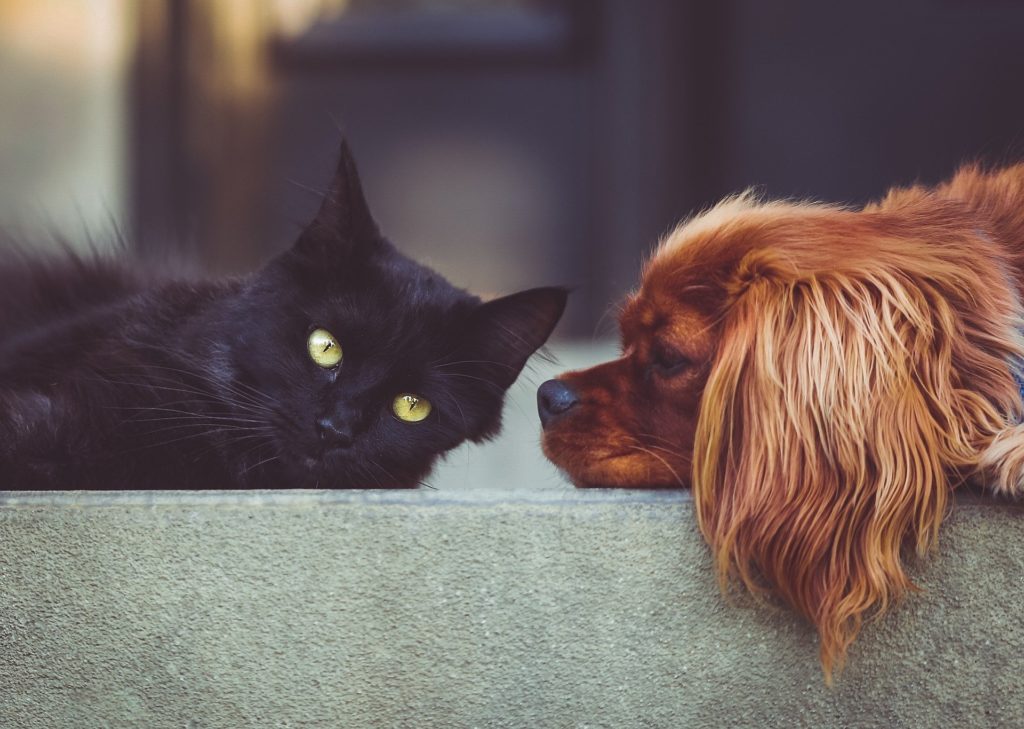Cats Are Not Small Dogs: Understanding the Differences
Today is National Cat Day! And we never miss an opportunity to discuss felines! Check out our latest blog from VetStem veterinarian, Dr. Amber Vibert.
I think we are all pretty aware that cats and dogs are different in many ways. Dogs tend to be pleasers and cats often make their humans work for their trust and respect. Dogs don’t really care if they are dirty or have something stuck in their fur, but cats on the other hand, cannot stand to be soiled in any way and will work fastidiously to keep themselves clean. And if a dog is caught counter-surfing for the sandwich that someone left unattended, he will cower when he is admonished. Cats will look at you as if to say, “So?” and quickly scurry away with a piece of ham in their mouth. Of course, there are exceptions, but in my experience, these characteristics are more often the rule than the exception.

Beyond their unique personality differences, however, there are several physical and psychological differences that are important to understand when approaching each species from a caregiving standpoint. For example, dogs have a ligament in their neck that helps to keep the head erect if the neck muscles are weak. Cats lack this ligament, so when they experience illnesses that cause profound muscle weakness such as hypokalemia (low potassium) or advanced stages of kidney disease, diabetes, or hyperthyroidism, they may become unable to lift their head.
Another example of how cats and dogs differ is with respect to their nutritional needs. We know that every species of animal on the planet consumes different kinds of foods to sustain their bodies. But many people don’t realize that cats and dogs have such significant differences that feeding a cat only dog food can cause heart disease and even death. One of the reasons for this is because cats have different essential amino acid needs. Amino acids are the building blocks of proteins. An amino acid is termed “essential” to a species when that species needs to consume the amino acid through their food in order to survive. Taurine is essential for cats and not as much for dogs, meaning that dogs produce enough of it in their bodies that they really don’t need as much in their food. So high-quality, well-established, commercial cat foods are specifically designed to provide the correct amount of taurine to keep cats healthy.
Furthermore, cats metabolize certain drugs very differently than dogs. For instance, did you know that although dogs can safely be prescribed low doses of Tylenol (acetaminophen), a single regular strength tablet can kill a cat? Both dogs and cats have a limited ability to metabolize this drug compared to humans, but cats have a really limited capacity and it will render their red blood cells unable to carry enough oxygen to live.
Cats also have unique needs when it comes to their surroundings. They have natural instincts to chase prey, climb and perch off the ground, control their own personal space, and use scent to establish their boundaries by rubbing their faces along people or items in their home. If these environmental needs are not met, not only will cats experience high levels of stress, but they can also develop stress-induced medical issues.
VetStem recognizes and embraces the fact that cats are not small dogs. We understand that cats not only have diseases unique to them such as Feline Chronic Gingivostomatitis (FCGS), but they also exhibit symptoms of illness very differently than dogs do. In particular, cats are particularly adept at hiding pain. This is why many cats go undiagnosed for common painful conditions such as degenerative joint disease (DJD). We encourage you to speak to your family veterinarian about establishing regular veterinary checkups for your beloved cat companions to keep them happy and healthy through all stages of life.
